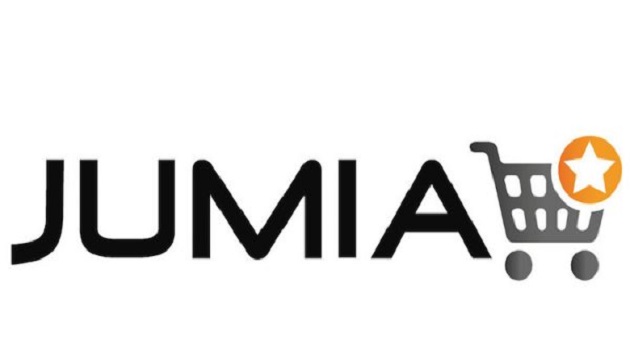E-Business
Western Digital Expands Flash Portfolio for Scaling Data-Centric Architectures

Building on a unique and diverse product portfolio across HDD and flash, Western Digital today announced a suite of new NVMe SSDs for enabling next-generation, data-centric architectures for data centers, industrial IoT, automotive and client applications.

The new family includes the Ultrastar DC ZN540 ZNS NVMe SSD for designing a more efficient data center storage tier with competitive TCO; the Western Digital® IX SN530 Industrial SSD for the extreme environments of industrial and automotive applications; and the 2TB WD Blue SN550 NVMe SSD for speeding up PC performance.
Leveraging Western Digital’s unique vertical integration capabilities – from designing and manufacturing its NAND flash to developing its own in-house SSD controllers and firmware – the new products underscore the company’s continued strength and commitment in driving storage innovation for new system architectures, applications and use cases for global customers across cloud, OEM, enterprise, channel and retail end-user markets.
Enabling Efficient Data Center Architectures – The amount of data created over the next three years will be more than the data created over the past 30 years, according to IDC.
Billions of connected systems will generate a myriad of contextualized data sets from smart video to consumer and sensor data, which must be captured, transformed and analyzed to bring value to industries, businesses and people. Legacy architectures cannot keep up with today’s data-intensive environments.
The challenge is how to efficiently and cost-effectively build the data infrastructure that will keep up with data demands of the zettabyte-scale era. Storage is critical and fundamental to creating these new architectures and extracting value from data.
Zoned Storage is the new storage architecture for the next-generation enterprise data center. In addition to championing the Zoned Storage Initiative and ZoneStorage.io, and contributing to the NVMe Working Group ZNS specification and the Linux® open-source community to further ecosystem development, Western Digital today announced that it is now sampling the new Ultrastar DC ZN540 ZNS NVMe SSD to select customers.
The Ultrastar DC ZN540 ZNS SSD includes a vertically integrated, dual-port, high-availability NVMe controller with capacities up to 8TB in a standard U.2 form-factor.
Leveraging ZNS, an industry standard specification, the new DC ZN540 is a new generation of SSD ideally suited for multi-tenancy environments and other data-centric applications such as event stream processing.
Compared to conventional SSDs, the drive delivers up to 4x performance and 2.5x QoS improvements, as well as better efficiency, utilization, and scale while lowering TCO for public and private cloud infrastructure.
Western Digital is committed to the development of a comprehensive Zoned Storage ecosystem and application support, which includes managing the synergies of high-capacity SMR HDDs and ZNS SSDs under a standardized unified Zoned Storage framework.
Empowering Data-Intensive Industrial IoT and Automotive Designs – Western Digital’s new IX SN530 is an industrial-grade NVMe SSD designed for the extreme temperature, performance, high-endurance and reliability requirements found in automotive and industrial applications.
Ideal for factory automation, transportation, medical, robotics, drones, defense, retail and other rugged edge environments, the IX SN530 NVMe SSD features a broad operating temperature range from -40°C to +85°C, and delivers a 20G operating vibration specification.
With read performance of up to 2,400 MB/s, it is the high-performance solution for OEMs designing new applications or transitioning from SATA SSDs. It is available in compact M.2 2230 or M.2 2280 form factors with capacity points from 85GB to 2TB. The IX SN530 TLC family is now sampling. SLC versions will be available in January 2021.
Bringing 2TB Capacity and Speed to Content Creators – The award-winning WD Blue portfolio now offers its popular WD Blue SN550 NVMe SSD in a 2TB drive, bringing a higher-capacity NVMe solution to content creators, including graphic designers, animators, videographers, architects and software developers.
Whether creating digital art, using CAD software or in post-production, the WD Blue SN550 NVMe SSD delivers over four times the speed of Western Digital’s fastest SATA drives.
The WD Blue SN550 2TB is available now for purchase at select Western Digital retailers, e-tailers, resellers, system integrators and at the WD store for $249.99 MSRP.
“Companies across every major industry and every vertical market are using flash technology to transform their businesses. The future of storage is application centric, and optimized for those businesses.” said Robert Soderbery, executive vice president and general manager, Western Digital’s Flash business.
“Today we are launching new SSD products for cloud, enterprise storage, industrial and client computing applications. These new SSDs are critical building blocks for our digital world, enabled by new architectures, giving a variety of customers more options than ever to ensure their data is fast, secure and protected.”
E-Business
Firm Identifies Global Scam Activity Linked to the Release of Avatar 3

The premiere of Avatar 3 has taken place in several countries and has been accompanied by a noticeable increase in online interest. Amid the heightened attention surrounding the release, Kaspersky experts identified an increase in cyber-scam campaigns that exploit the movie’s launch and users’ desire to watch it online. The fraudulent websites target users across multiple regions, indicating attempts by attackers to reach a global audience.

The scam operates as follows: cybercriminals create suspicious websites that offer online access to the Avatar 3 movie. Attackers place particular emphasis on localisation, publishing the sites in multiple languages to attract users from different countries. However, the translations are often poorly executed and contain grammatical errors and inconsistencies, which may serve as indicators of fraudulent activity.
When users attempt to start the video, they are presented with a fake media player and prompted to register in order to obtain “full” or “unlimited” access to the film. As part of the registration process, users are asked to provide personal information, including an email address and mobile phone number.
At later stages, scammers may request additional data, including payment details, under the guise of activating a “free trial.” This creates risks of credential compromise, particularly if users reuse passwords across multiple services, and may also lead to financial losses.
“Cybercriminals consistently exploit major movie premieres to capture users’ attention and increase the effectiveness of their schemes. We advise accessing films only through official platforms and exercising caution when encountering websites that request personal or payment information. It is also important to use reliable security solutions to protect all devices, including mobiles,” comments Olga Altukhova, Senior web content analyst at Kaspersky.
E-Business
Galaxy Backbone Celebrates the Federal Government’s Paperless Civil Service Milestone

Galaxy Backbone (GBB) aligns with and celebrates the successful announcement by the Office of the Head of the Civil Service of the Federation on the achievement of a Paperless Civil Service, a significant milestone in Nigeria’s public sector reform and digital transformation agenda.

The milestone was formally highlighted at a press briefing led by the Head of the Civil Service of the Federation, Mrs. Didi Esther Walson-Jack, who commended Galaxy Backbone for its sustained support and contribution throughout the implementation of the programme.
GBB has played a critical role in enabling this transition by providing secure, scalable, and shared digital infrastructure that supports the digitisation of government processes across Ministries, Departments and Agencies (MDAs). Through the 1Government Cloud, MDAs have been empowered to migrate from paper-based workflows to digital platforms, improving efficiency, collaboration, data security, and service delivery across the Federal Civil Service.
In addition, GovMail, GBB’s secure government email platform, has strengthened official communication, enhanced records management, and reinforced cybersecurity standards—key pillars in sustaining a paperless operating environment.
Galaxy Backbone acknowledges the collective efforts of the Office of the Head of the Civil Service of the Federation, Permanent Secretaries, Directors of ICT, consultants, partners, and dedicated public servants whose commitment and collaboration ensured the smooth delivery of this initiative.
The Managing Director/Chief Executive Officer of Galaxy Backbone, Prof. Ibrahim Adeyanju, was represented at the press briefing by Akintayo Bamisaye, Acting Group Head, Research, Digital Innovation and Skills Department (RDIS).
GBB describes the achievement as a strong close to 2025 and reaffirms its commitment to supporting the Federal Government in building a modern, efficient, and digitally enabled public service.
E-Business
Jumia CEO says Black Friday Signals Nigeria’s E-Commerce Maturity

At the close of 2025, Temidayo Ojo, the CEO of Jumia Nigeria, reflected on a year-end shopping season that points to the growing maturity of the country’s e-commerce market. “Black Friday is no longer a single, short-lived spike in activity,” he said.

“It has become a familiar, anticipated moment in the retail calendar, where consumers shop deliberately and with confidence.”
Preliminary KPIs for the two months ended November 30, 2025, show strong year-on-year growth in both orders and Gross Merchandise Value (GMV), with GMV growth outpacing order growth. This indicates that customers are placing fuller, more considered baskets rather than shopping in fragmented transactions. Nigeria ranked among Jumia Group’s better-performing markets, with engagement remaining steady throughout the Black Friday period rather than spiking briefly and tapering off.
A key factor behind this performance is the growing familiarity of consumers with online shopping. Customers are increasingly leveraging platform features such as saved carts, brand stores, and price comparison tools to plan purchases in advance. This trend suggests that digital commerce is becoming embedded in everyday habits rather than being viewed as a one-off event.
Ojo also highlighted the role of Jumia’s JForce network in connecting digital commerce to local communities. “Our agents are critical to ensuring that customers across Nigeria, including secondary cities and smaller communities, have access to variety, consistent pricing, and reliable delivery,” he said. “During peak periods like Black Friday, JForce agents can respond faster, serve more customers efficiently, and build stronger local relationships. This isn’t just a distribution channel—it’s a pathway to sustainable income and inclusion.”
Reflecting on the overall performance, the CEO concluded: “What we’re seeing this year-end is steady engagement across categories, stronger consumer confidence, and partners like our JForce agents benefiting from increased activity.
“It confirms that Nigeria’s e-commerce ecosystem is maturing, growing in a more structured and resilient way. As the December Holiday Sale continues, we expect these patterns of familiarity, trust, and participation to sustain momentum and drive both commerce and community impact across the country.”

 News2 days ago
News2 days agoCourt Sends Faleti, Ex-Lagos Director to Jail for Stealing ₦48.9m from Access Bank

 E-Financial2 days ago
E-Financial2 days agoRemita Powers over ₦100 Trillion in Payments as Nigeria’s Digital Economy Expands

 News3 days ago
News3 days ago974 Nigerians Face Imminent Deportation from Canada Amid Enforcement Surge

 E-Financial2 days ago
E-Financial2 days agoWhy 2026 Must Be the Year Nigeria’s Economy Works for All

 General News3 days ago
General News3 days agoHouse of Reps Releases Certified Copies of Tax Reform Acts amid Gazette Discrepancy Claims

 E-Financial2 days ago
E-Financial2 days agoFlutterwave Acquires Nigeria’s Mono in $25m-$40m All-Stock Deal

 E-Financial2 days ago
E-Financial2 days ago2026: SEC to Review Rules to Incentivise SME Listings

 General News2 days ago
General News2 days agoNigeria Targets Satellite-to-Mobile Services in Draft Spectrum Roadmap



























